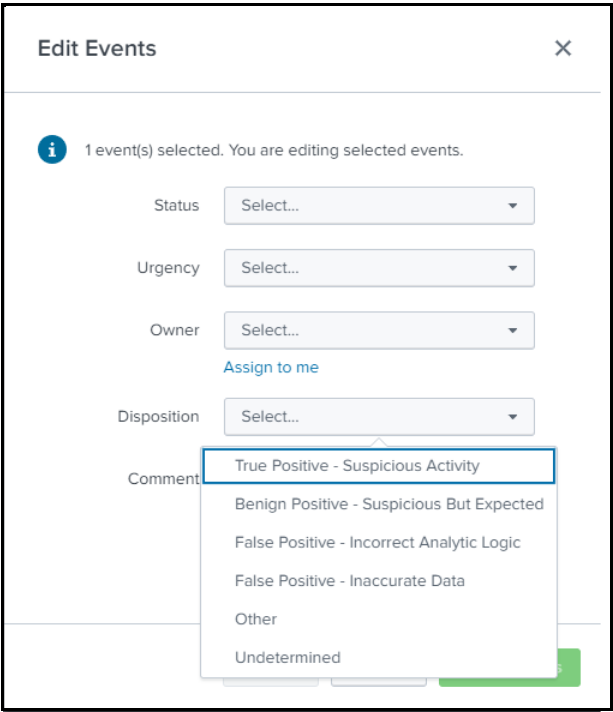Add dispositions to risk notables
Ram adds dispositions to the risk notables using the Incident Review dashboard to identify the threat level associated with the notable accurately. Adding a disposition helps to classify the notables, separate the false positives, and drill down on the notables that pose the highest threat. This helps Ram to accelerate the triage of notables during an investigation and respond to security threats faster.
You can use the SOC Operations dashboard to gather insight into the security operations center (SOC) based on dispositions so that you can monitor the efficiency of the SOC and ensure that all security operations (detections, analysis, and responses) are on track. The panel on Dispositions Over Time displays a distribution of the various dispositions that are assigned to notables over the duration of a specified time period. This visualization provides insight into the number of notables that are false positives versus notables that are true positives. For more information on assigning dispositions to notables, see Add dispositions to notables.
- From the Splunk Enterprise Security menu bar, Ram clicks the Incident Review page and scrolls down to the table that lists the notables.
- Ram sorts them to bubble up only the risk notables and selects the checkbox beside the risk notables for which he wants to add a disposition.
- Ram clicks Edit Selected to edit the notable that he selected.
- For each risk notable, Ram selects one of the options from the Disposition drop-down list as shown in the following image and saves his changes.
Now Milly, the detection engineer, can prioritize the investigation of risk notables that are tagged as True Positive - Suspicious Activity.
| Reduce alert volumes by triaging notables | Sort notables by disposition |
This documentation applies to the following versions of Splunk® Enterprise Security: 7.0.0

 Download manual
Download manual
Feedback submitted, thanks!